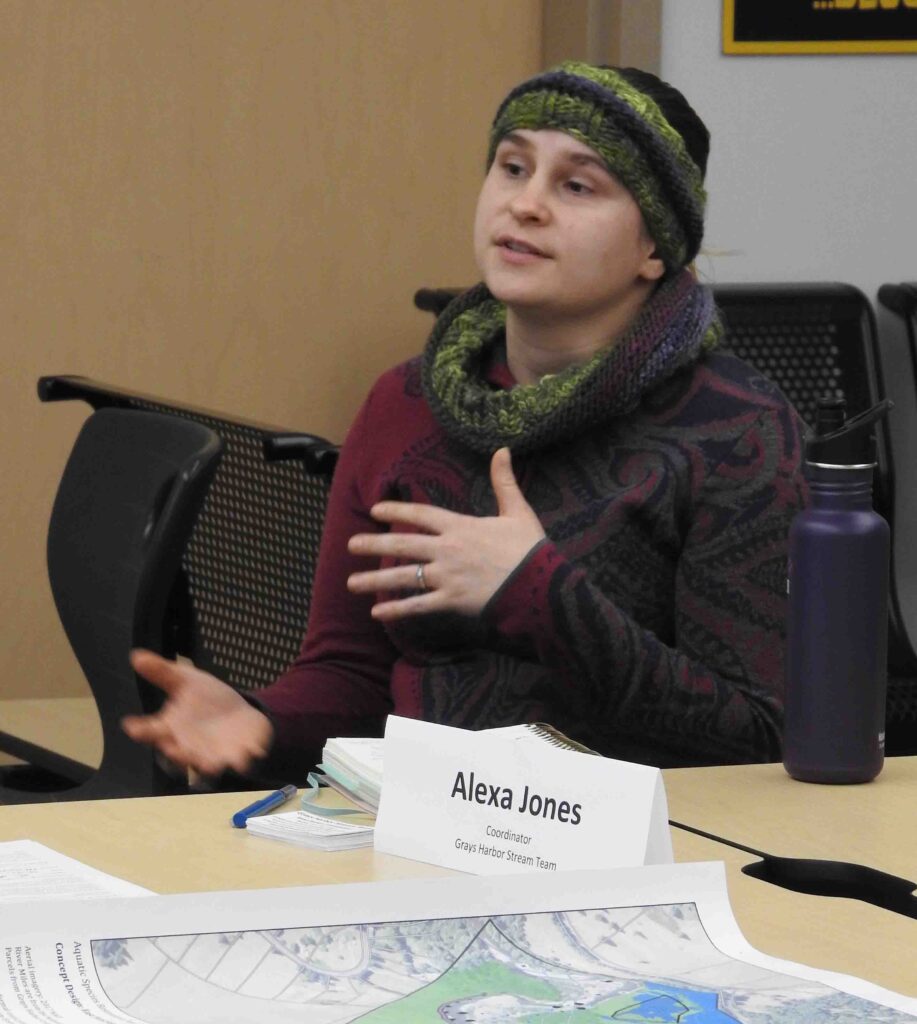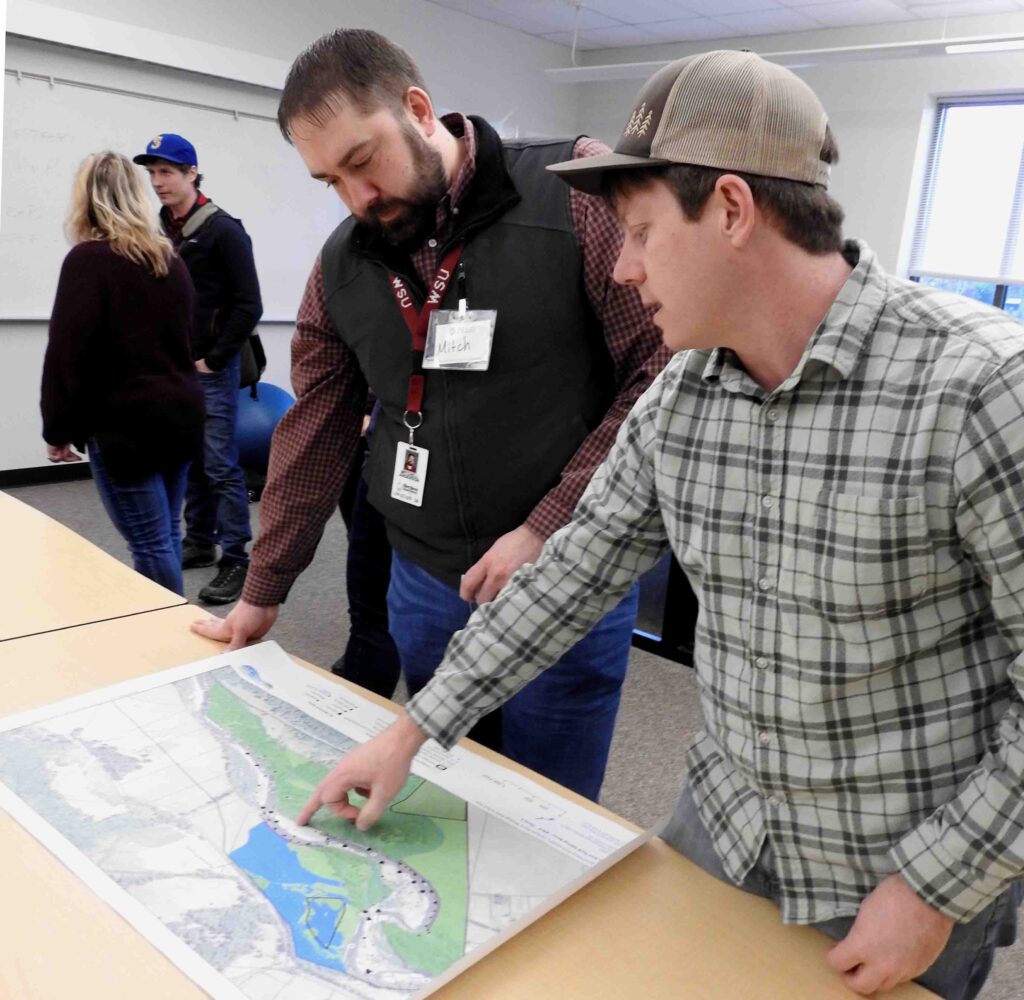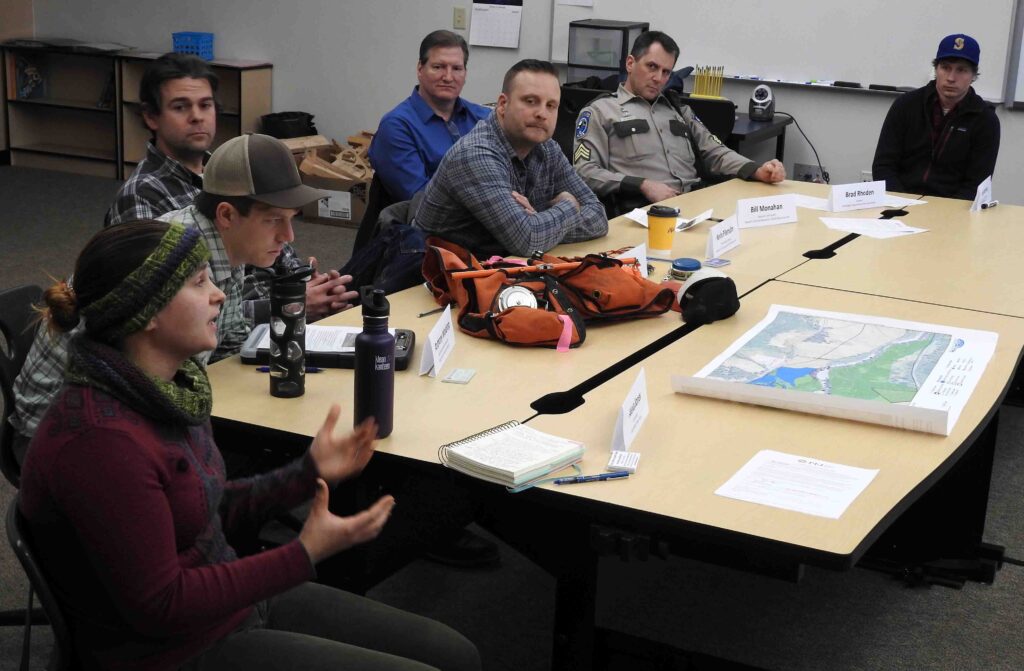Although the term STEM applies to a broad range of disciplines, in many minds it’s synonymous with only one: technology, specifically computer technology. It may surprise people to realize that every day, science, engineering, math and yes, technology are being applied outdoors in natural resources industries like shellfish, farming, timber, and conservation.
More importantly, many students who grow up in regions where those industries have a strong presence don’t realize what kinds of jobs are available as a

result. On February 11, a panel of natural resources professionals met with a group of 5th-grade teachers from the Aberdeen School District to change that. “We want to help students understand the other applications of STEM,” says Julie Tennis, Coastal Region Coordinator of the Pacific Education Institute (PEI). “STEM-based jobs in our region are often overlooked.”
PEI’s FieldSTEM program is designed to help alleviate teacher concerns about time. The FieldSTEM model aligns opportunities to apply learning in collaboration with the community to the science, math, English language arts, social studies and other standards teachers need to address. Working with the school district, and the teachers, PEI identifies units, stories, or other teaching resources from existing state and national curriculum that can be localized to provide meaning and context for students. At the same time, students learn about local natural resource, agriculture, renewable energy and outdoor recreation jobs in their area.
Tennis convened the panel, which culminated in a discussion of ways community groups could collaborate with PEI and teachers to expose students to authentic uses of STEM and potential careers in their region. Panel members explained their roles, described the pathway they took to illustrate how they use STEM on a regular basis.
Some of those applications are surprising. Brad Rodin has spent 24 years as an enforcement officer for Washington State Fish & Wildlife, regulating the crab and oyster industries. Theft and attempts to cheat the system by underreporting oyster yields are ongoing issues, he told the group. “We’ve worked cases where people are underreporting and you have to do math backward,” he said. “It gets pretty complicated.”
Both math and science are critical aspects of forestry, according to Bill Monahan of Rayonier, a global forest resources company that manages 2.6 million acres of timber throughout the nation, including Washington and Oregon. Two tools foresters never leave home without are Spencer’s tape, which calculates trees’ diameter, and a clinometer, which measures height by using trigonometry.
“We have timber crews collecting data that is used for running long-term models of how those trees are going to grow over time,” said Monahan. “We either want no less growing stock than we had at the beginning or we want to increase our growing stock, so we load the data into the system, and it tells you how much stock you can take annually.”
Within the Grays Harbor Conservation District, STEM is part of the technical assistance provided to landowners to help them manage and protect resources. Service Forester Dave Houk provides forestry and agricultural support to landowners. “We do a lot of STEM,” he explained. “We used fixed radius plots that can be expanded to calculate how many trees we have or determine how many snags we have in a given area. It depends on what the property owners’ goals and objectives are. Geographical Information Systems (GIS) is also a very powerful mapping program we use to delineate properties to manageable standards.”
Houk’s colleague Anthony Waldrop, a Watershed Restoration Specialist, helps landowners develop conservation plans for watersheds on their properties. Projects might include planting salmon-friendly vegetation or engineering log jam structures that provide salmon habitat and reduce erosion along the river. “We look at construction over a span of several years,” Waldrop said. “A lot of prep work goes into that, and we make sure it works from the landowners’ standpoint.”
Of all the panel members, Grays Harbor Stream Team Coordinator Alexa Jones was the one who works most directly with students on a consistent basis.

In the coming year she’ll bring students to the Coastal Interpretive Center at Ocean Shores, do salmon life cycle presentations in classrooms, and offer water quality testing with students. “Our focus is on reaching students and bringing education about the habitat needs of salmon to classrooms,” said Jones.
The audience of Aberdeen teachers were highly receptive to both the message they heard and to exploring ways to collaborate with panel members and their organizations. “I just want my kids to know that there’s more out there that they could be interested in,” says Janice Williams, a 5th-grade teacher at Robert Brigham Elementary School. “A lot of kids go fishing and hunting, but they don’t realize that they could make a career out of being outdoors. I want to open their eyes to different opportunities.”
Kevin Pilemalm knows firsthand how easily students can overlook such chances. “I’m really glad to see what you’re doing here,” the marketing director and former field engineer at Rayonier told the group. “I graduated from a Federal Way High School and I didn’t even know the forest industry existed.” A conversation with a counselor during his second year as an engineering student at the University of Washington changed the course of his life, allowing him to pursue a career that fed his love of both mathematics and the outdoors.
Kyle Deerkop has also noticed a lack of information and clear pathways to careers in students’ own communities. Deerkop is a manager at Pacific Seafood, which supplies two-thirds of all the oysters consumed in Washington State and one-fourth of those nationally, in addition to crabs and other marine life. “Westport is one of the top ten landing ports in the nation,” he noted. “We don’t think about students growing up to be oystermen or crab fishermen, but it is a real part of our community.”
A Q&A session followed, and the group began brainstorming for ways to work together while accommodating as many students as possible. Rotating students through stations provided by different partners was one popular suggestion. “If you come out to Westport, we could put 30 kids on a boat, Alexa could talk about water quality and Brad could talk about Fish & Wildlife,” said Deerkop. “We could link multiple stakeholders together to accommodate larger groups.”
One concern: given the number of existing demands on teachers’ time, was it realistic to plan on implementing such community partnerships? Suzanne Black, a teacher at McDermoth Elementary, had some input, having spent two years working toward a master’s degree that required her to incorporate extra elements into her curriculum. “It broadened their knowledge base and we incorporated it back into the things we were required to cover,” Black explained. “The payoff that I saw from the engagement with my students was totally worth it.”
